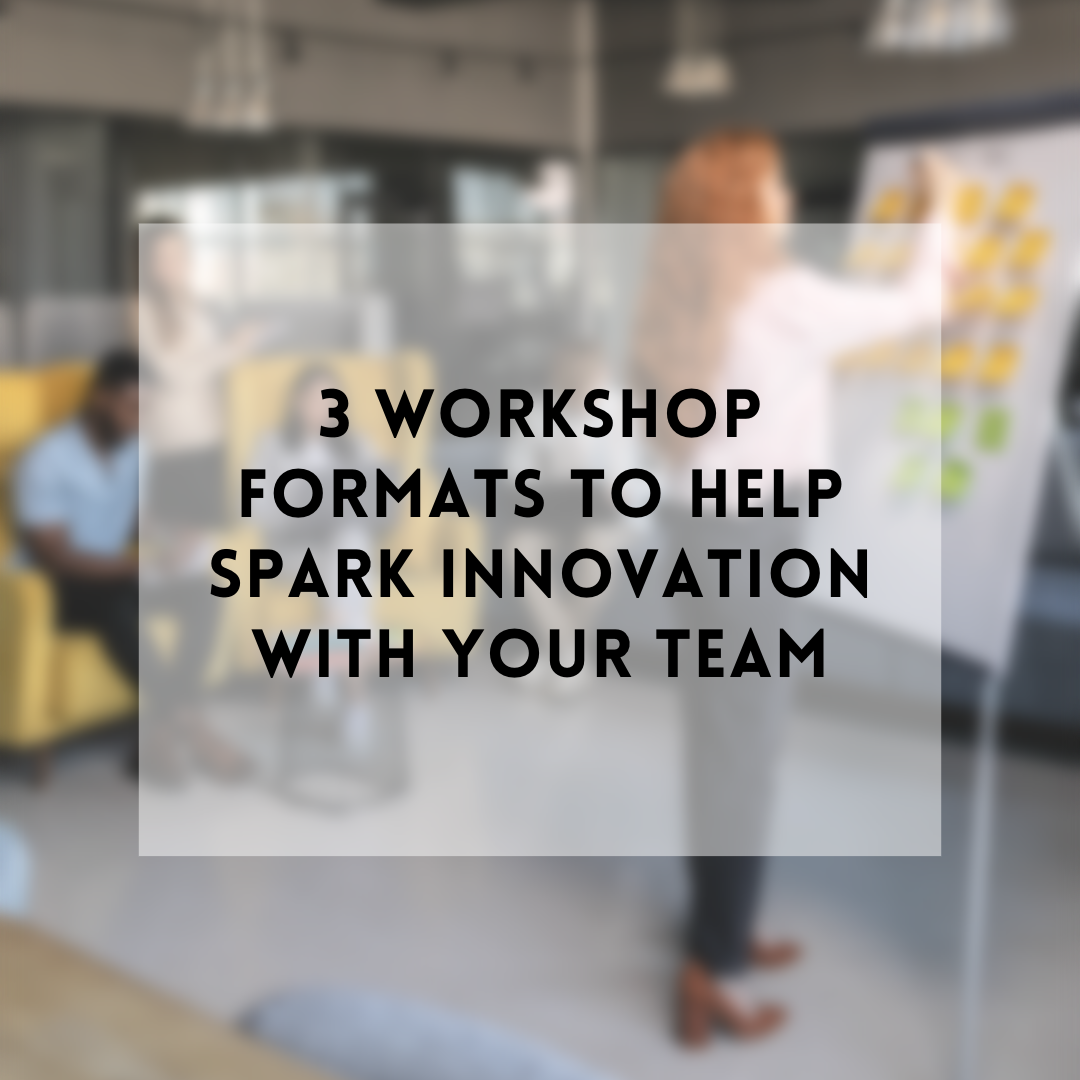3 workshop formats to help spark innovation with your team
Want to cultivate a more dynamic, engaged, and successful organization? Who doesn’t!
One of the most impactful ways to achieve this goal is to take a more intentional approach to innovation. Doing so has a ton of benefits, including:
More competitive edge: Concerted efforts around creativity and innovation allow your teams to develop new products/services that better meet customer needs and help keep you ahead of the competition.
Improved morale: Encouraging team members to learn new skills, explore new areas of knowledge, and grow professionally results in a workforce that’s more likely to feel satisfied, engaged, and that they’re making a meaningful contribution to the organization.
Better flexibility and adaptability: Innovation enables your teams to adapt to changes in the market, customer needs, and technological advancements. This flexibility can help your organization stay relevant and competitive over time.
Great ideas rarely happen by accident, and hedging your bets that innovation will naturally strike your team like Microsoft struck Bill Gates is a surefire way to miss out on opportunities.
Not sure where to start, or if it applies to your group? Here are three common scenarios that cause many teams to fall idle, along with the workshop formats I use to get them unstuck, tap into their true potential, and unlock possibilities for the organization.
You need solutions for problems with a high degree of uncertainty and your internal product team isn’t making progress because of schedules, logistics, cultural tensions, and/or internal politics
The workshop solution: In this scenario, I recommend the 5-day Design Sprint – a collaborative prototyping and testing endeavor – because it’s a quick way to validate ideas, allow team members to co-create solutions, get feedback from people who represent your customer, and create a testable prototype in a short period of time.
Why it works: Design Sprints are particularly powerful because: 1) you're able to bring participants together for a designated amount of time to focus solely on the problem at hand, and 2) they remove the distractions and competing needs that frequently get in the way of progress (like multitasking, other meetings, email inboxes, etc). Plus, you’ve got the benefit of fostering collaboration between key individuals who may not work together regularly but rely on one another to find a path forward. This avoids the waterfall process where one person comes up with an idea and others simply execute it. When the team is able to collaborate together, more creative ideas are uncovered and people feel more ownership over seeing them through, which is why Design Sprints are such powerful tools for innovation.
Your team is working scattershot without a clear understanding of which problems are most important to solve and WHY
The workshop solution: Oftentimes, when I work with teams I find that they don’t fully understand the problem they’re trying to solve for the customer or the outcome they’re trying to drive. To uncover this information, I recommend a Problem-framing and Idea Generation Workshop. This workshop is all about aligning the right work with the business and sets out to identify the possible problems to solve and, once defined, how to prioritize them. Sketching exercises and paper prototypes can take this one step further so you can walk away with tangible and directional potential solutions.
Why it works: When you focus on what you’re making before identifying why you’re making it, you usually end up building the wrong thing. A Problem-framing and Idea Generation Workshop workshop is effective because it forces team members to get crystal clear about what problems they want to solve, and in what order. This ensures that the team is aligned around the solutions that will be most meaningful to the customer, and sets the foundation for the work to follow (like which innovation paths to follow). Coming out of the workshop, you’ll have a bunch of ideas set in priority order against specific problems, and an energized team that has rallied around the “why.”
Your company can’t clearly articulate its essence, attributes, or how you want your brand/product to show up in the world
The workshop solution: Your brand's essence impacts everything, from communication touchpoints and product expression, to innovation. When a brand lacks foundational pillars (values, a positioning statement, tone/voice direction), it’s a recipe for confusion and a blocker to informed innovation. To solve this, I recommend a Branding Sprint to focus on defining the essence of a brand, product, new businesses, or even an individual.
Why it works: A clear identity gives teams a solid foundation to build upon, lending necessary parameters to help steer the work. When your brand DNA is well defined, it keeps innovation aligned with your vision for the future. It also helps your teams feel more confident when making choices about what to pursue.
If you saw your team reflected in any of these scenarios, don’t panic. Now you know exactly what you need to do to focus their thinking, inspire creativity, and unlock new ideas.
If you want logistical help running a workshop, take a look at the remote guide to Design Sprints, learn how to prep your team for an intensive workshop, or feel free to read more about these and other workshop formats. And if you want more guidance, send me a note!
